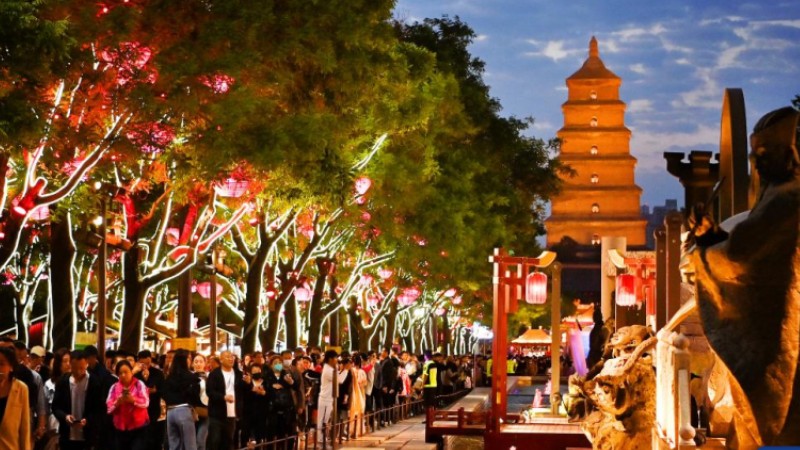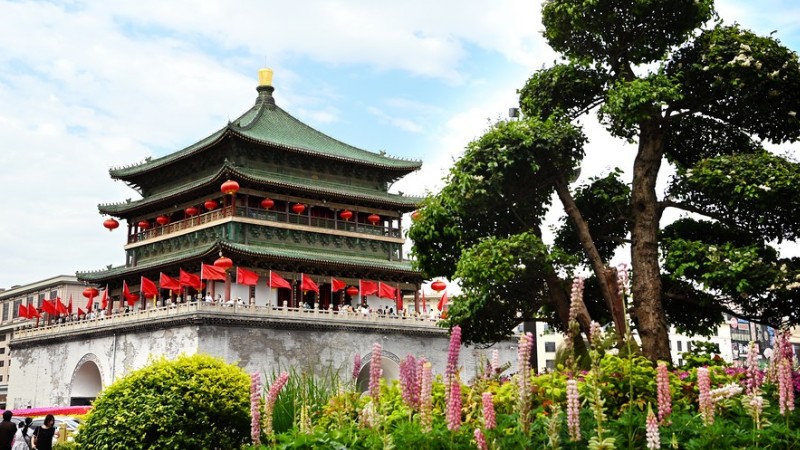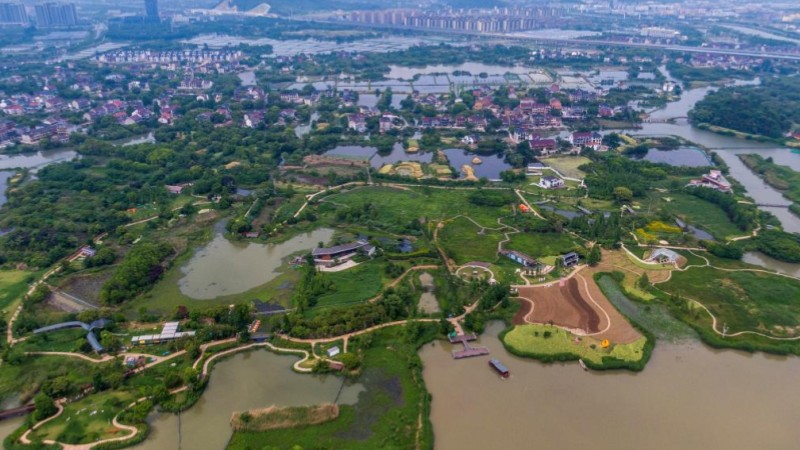China Focus: BRI breathes new life into China-Kazakhstan border port
URUMQI, May 13 (Xinhua) -- If you visit China-Kazakhstan Horgos International Border Cooperation Center, you will be instantly captivated by its vitality -- a constant stream of tourists, vehicles shuttling back and forth, and stores jammed with merchants and buyers.
Covering 5.6 square kilometers, the center is the first cross-border cooperation zone established between China and other countries, adding to the allure of Horgos City in northwest China's Xinjiang Uygur Autonomous Region, where it is partly located.
Among those who "dig gold" in Horgos is Yu Haonan. He came to the landlocked city seven years ago from Heilongjiang Province in northeast China, over 3,000 km away.
"The huge crowds of visitors to the cooperation zone have fueled Horgos' rapid development. I know I made the right decision," said Yu, a bag shop owner in the cooperation center that spans China and Kazakhstan.
Horgos, meaning "a place where camels pass" in Mongolian, was once a busy passage used by traders traveling along the ancient Silk Road. As a border pass, it dates back more than 140 years.
While it lost its shine after caravans faded into history, the Belt and Road Initiative (BRI), proposed by China in 2013, has revitalized the old port.
The China-Kazakhstan Horgos International Border Cooperation Center is one of Horgos' biggest lures. The center received more than 20,000 people daily during the five-day May Day holiday, official data showed.
There are rows upon rows of wholesale stores, duty-free shops, warehouses, and business centers. Every person may purchase up to 8,000 yuan (about 1,150 U.S. dollars) in duty-free goods daily.
"As the number of tourists increased, my store has been short-staffed lately," said Yu. He recruited five employees from Kazakhstan who will work from next week.
Since the center started operation in 2012, it has attracted 4,000-plus merchants like Yu and over 6,000 employees in peak time.
TRANSPORT HUB
As the morning sun spreads across the city, nearly 100 domestically-produced new energy buses depart from Horgos Chenxi International Freight Forwarding Co., Ltd. to the city's highway port.
The company's general manager Che Xueling is grateful for improved customs clearance and simplified procedures. "Vehicles can go through customs more quickly nowadays. They will arrive in Tashkent, the capital of Uzbekistan, within five days," Che said.
She said her firm set a goal to export more than 10,000 vehicles this year.
The BRI, which initiated a new prospect for China's opening up, has provided unprecedented opportunities for Horgos, one of China's closest ports to Central Asia and Europe by land transport.
In the first quarter of this year, the port handled 1,833 freight trains connecting China with European and Central Asian countries, registering a record-high increase of 8.4 percent year on year.
From January to March, the import and export cargo volume of Horgos Port exceeded 8 million tonnes. The robust trade flows have cemented the city as a transport and logistics hub.
A CITY OF OPPORTUNITIES
In Kazakh, Horgos means "a place where wealth can be accumulated." Many say that resonates with what it is becoming today -- a regional hub of trade and commerce and a true testament to the BRI.
The China-Central Asia Summit will be held in Xi'an, Shaanxi Province, on May 18 and 19. Economic and trade cooperation between China and the five Central Asian countries, namely Kazakhstan, Kyrgyzstan, Tajikistan, Turkmenistan and Uzbekistan, has achieved tangible results.
The country's trade with the five countries reached 70 billion U.S. dollars in 2022 and recorded a year-on-year expansion of 22 percent in the first quarter of this year.
Attracted by business opportunities, many entrepreneurs from Central Asia have flocked to Horgos. First-time visitors to the city are surprised by its economic development. They see newly-built hotels, apartments, and factories reinventing the skyline of this former backwater.
Bekzod Ismatulayev is one such "gold seeker" drawn to Horgos. From Uzbekistan, he moved to Horgos in 2016 and set up his own company.
"The Chinese market is enormous," Ismatulayev said. He now imports Uzbek dried apricots and soda to China and exports many Chinese technologies and goods to Central Asia.
In China, Ismatulayev has gained fortune and love. He married a Chinese woman in 2017, and they are expecting their third child.
"What impresses me most about Horgos is how fast it develops," he said. "I believe more Chinese and Central Asian businesspeople will realize their dreams in this boomtown."
Photos
Related Stories
- BRI International Green Development Coalition now has 42 members
- Chinese-built new highway to help Kyrgyzstan in economic development -- experts
- Hungary-Serbia railway under construction
- Will China-Italy BRI cooperation fall victim to anti-Chinese forces?
- China completes delivery of trains for Indonesia's high-speed railway
- 10 years on, BRI brings jobs, business opportunities to China, Indonesia
- Feature: Chinese, Malaysian youths' dedication shines on BRI East Coast Rail Link megaproject
- Feature: Chinese youths devoted to BRI projects in Bangladesh
- China Focus: China's water-saving agriculture technology benefits BRI countries
- Interview: Establishing relations with China most important diplomatic decision, says Dominican Republic minister
Copyright © 2023 People's Daily Online. All Rights Reserved.









